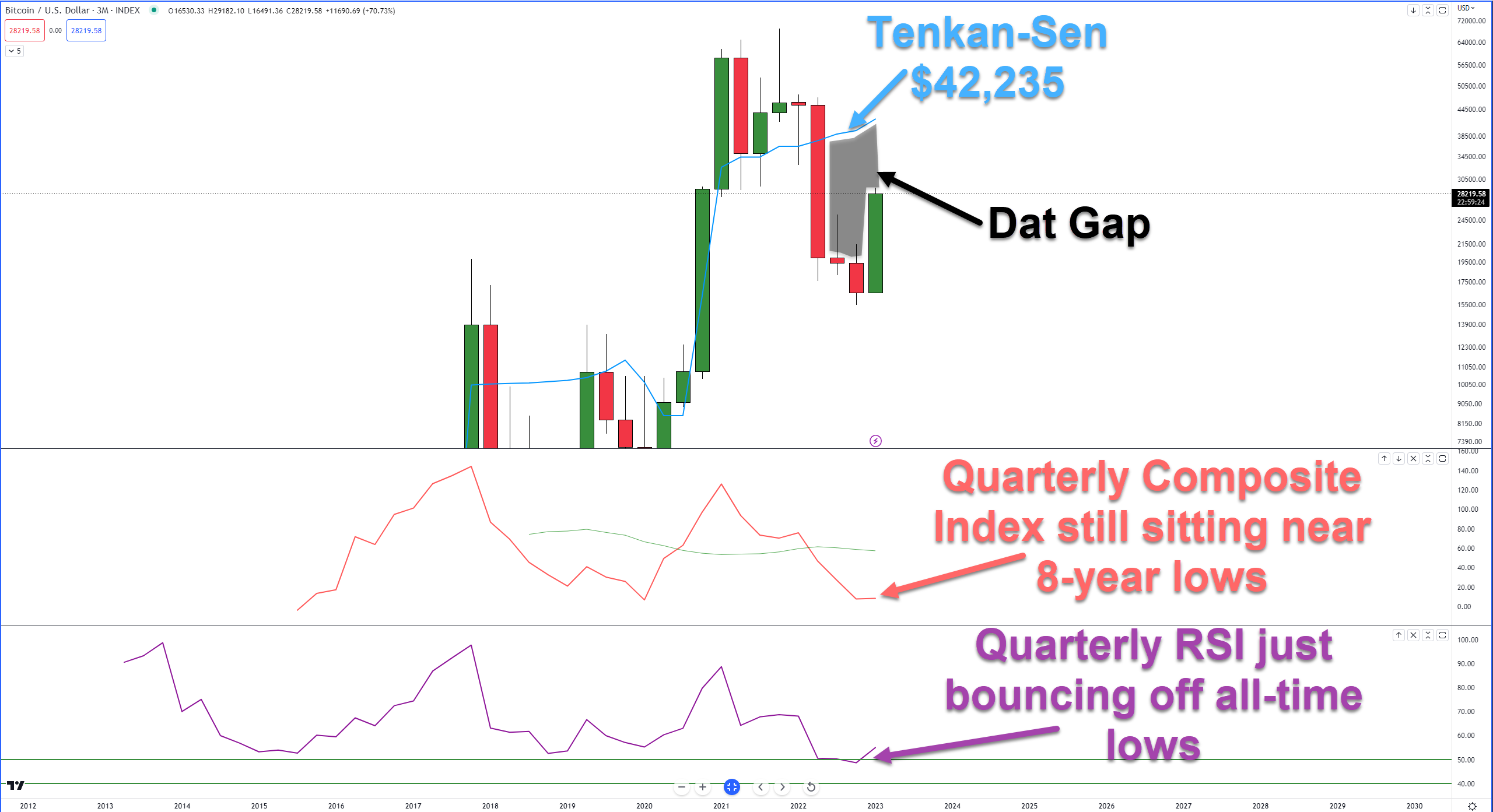Bitcoin’s Quarterly Chart
On Bitcoin’s quarterly chart, two significant oscillator levels are present, which many analysts and experts believe could indicate a potential new bull run.
It is worth noting that, prior to Q1 2023, $BTC had experienced four consecutive quarterly losses, making it the longest such period in its history.

In Q4 2022, the quarterly RSI dropped below the first oversold level for the first time in a bull market, but bounced in Q1 2023. Meanwhile, the Composite Index has slightly increased after reaching eight-year lows.
When the gaps between the candlestick bodies and the Tenkan-Sen are considered alongside oscillator levels, it appears that there is a strong chance of a mean reversion towards the Tenkan-Sen, leading to a continuation of the current bullish price correction as the market price returns to equilibrium.
We will need to wait and observe how Bitcoin performs in testing the Tenkan-Sen, as the bears could potentially regain control if Q2 closes below the Tenkan-Sen and the quarterly oscillators display bearish divergence.
Let’s see how Q2 goes!
